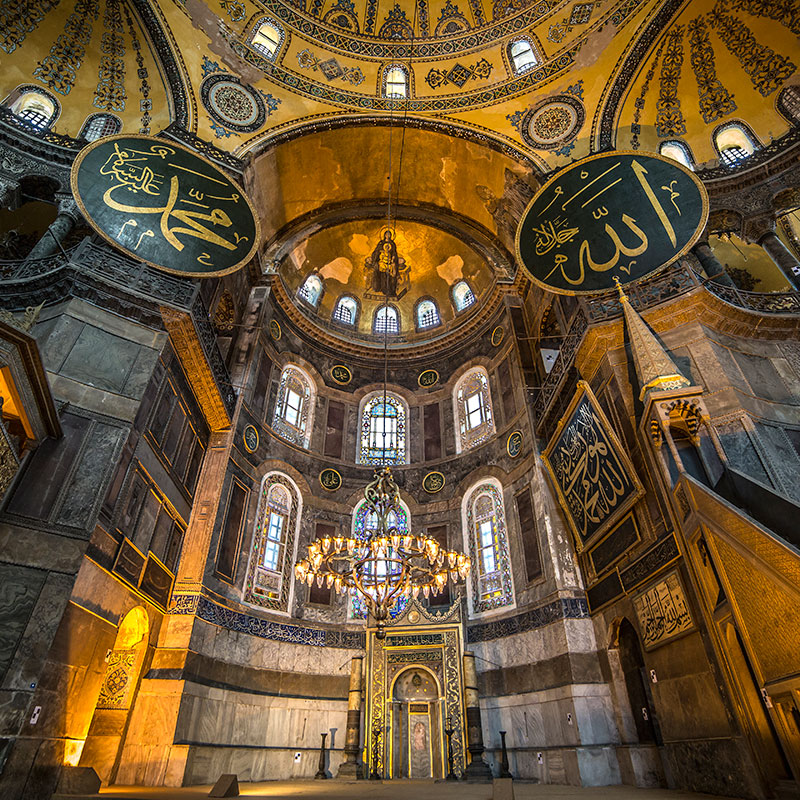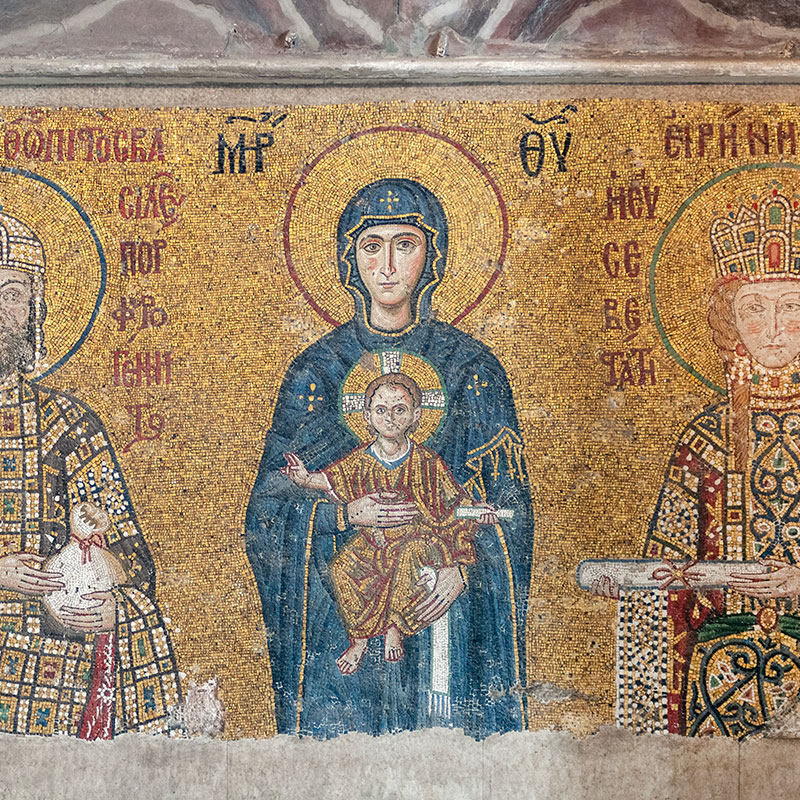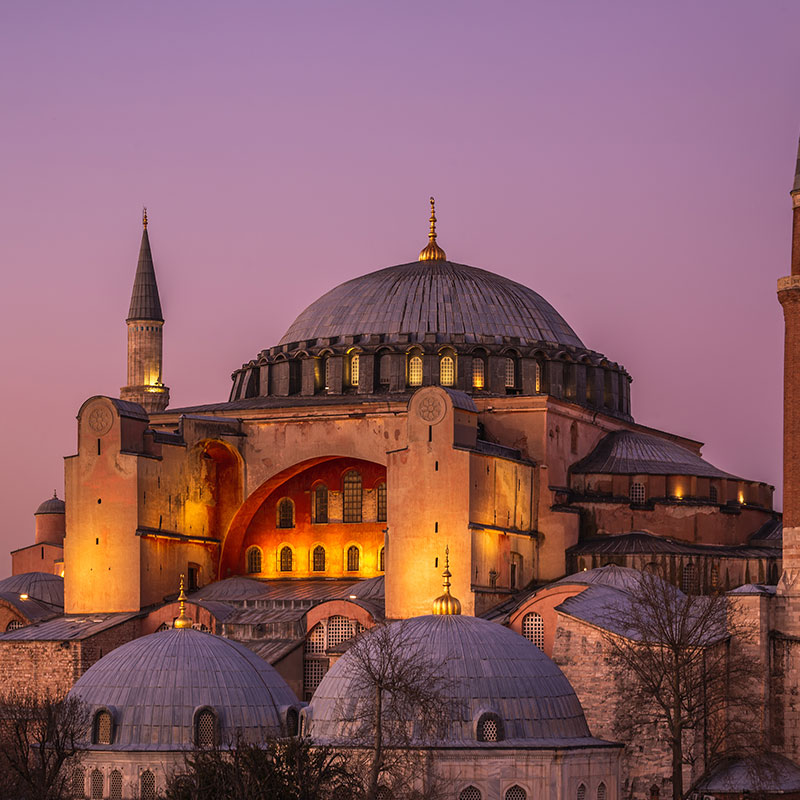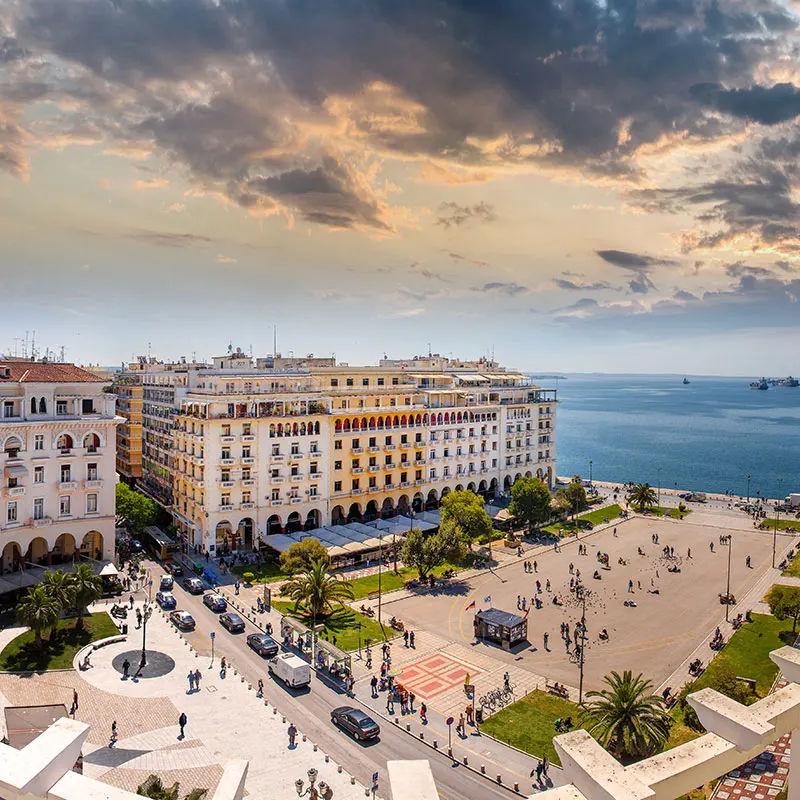Agia Sofia: A Timeless Wonder
Nestled in the heart of Istanbul, Agia Sofia stands as a testament to the rich and complex history of the region.
Originally constructed as a cathedral in 537 AD under the Byzantine Emperor Justinian I, it has since undergone several transformations, reflecting the cultural and religious shifts of the city it calls home.
Originally constructed as a cathedral in 537 AD under the Byzantine Emperor Justinian I, it has since undergone several transformations, reflecting the cultural and religious shifts of the city it calls home.

360 Virtual Tour Presentation
The Magnificence of Hagia Sophia: An Architectural and Artistic Marvel

The grandeur of Agia Sofia is immediately evident upon entering. Its vast dome, which was an engineering marvel of its time, soars above, creating an awe-inspiring space filled with light.
The interior is adorned with intricate mosaics, many of which depict Christian iconography, offering a glimpse into the artistic and religious heritage of the Byzantine Empire.
The interior is adorned with intricate mosaics, many of which depict Christian iconography, offering a glimpse into the artistic and religious heritage of the Byzantine Empire.
Hagia Sophia: A Masterpiece of Cultural and Architectural Synthesis
In 1453, with the Ottoman conquest of Constantinople, Agia Sofia was converted into a mosque. This period saw the addition of minarets, a mihrab, and other Islamic elements, blending the existing Byzantine architecture with Ottoman design.
This unique fusion of styles makes Agia Sofia a remarkable example of cultural and architectural synthesis.
This unique fusion of styles makes Agia Sofia a remarkable example of cultural and architectural synthesis.

Hagia Sophia: From Mosque to Museum Welcoming Visitors from Around the World

Today, Agia Sofia functions as a museum, welcoming visitors from around the world.
It serves as a powerful reminder of Istanbul’s storied past, where East meets West, and history and art intertwine.
It serves as a powerful reminder of Istanbul’s storied past, where East meets West, and history and art intertwine.
Tags: #museum











